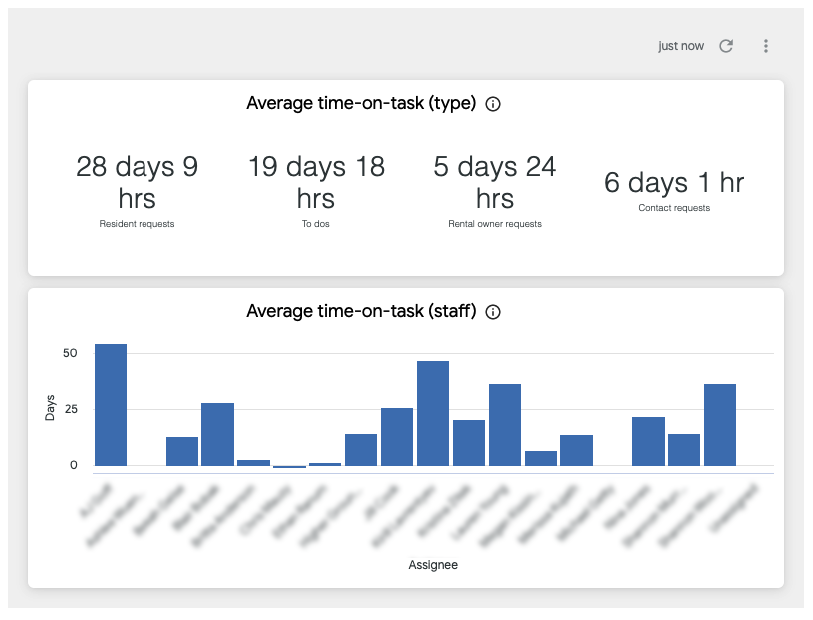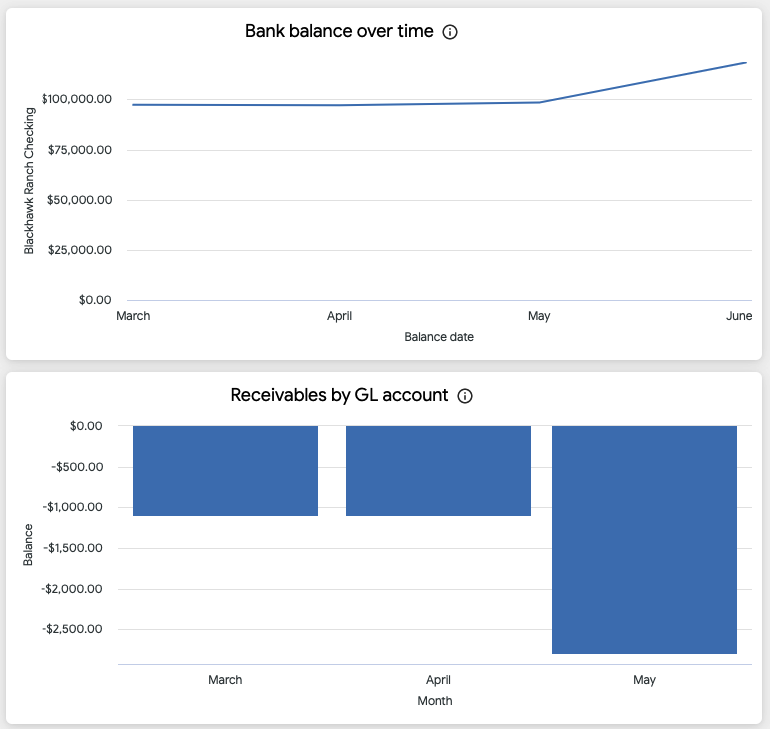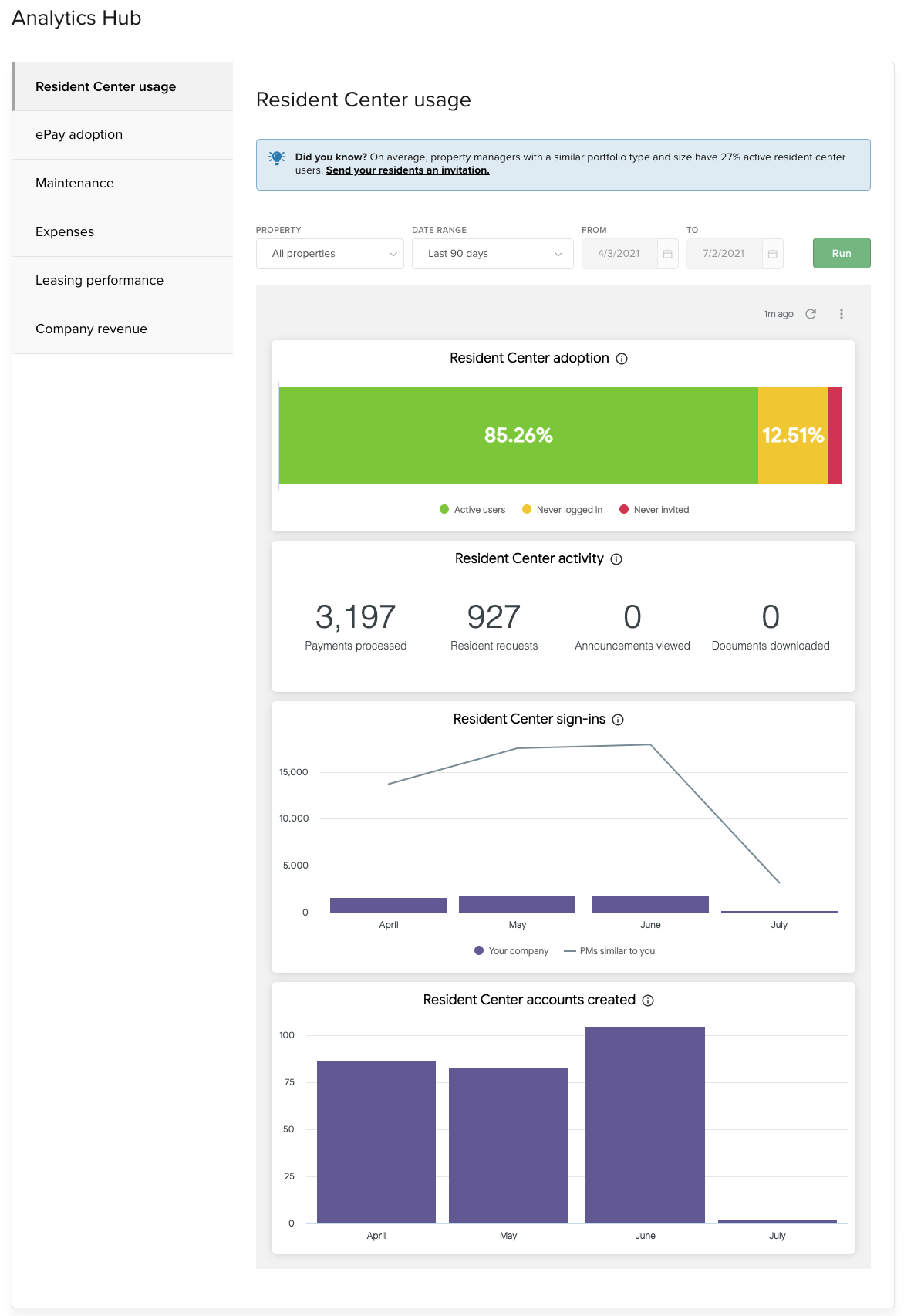You may have heard the buzzword data-driven culture bounced around for decades. But implementing a company culture based on data is more than just a passing thought. It’s a proven and measurable way to create success and accountability within your property management company.
Chart of Accounts
Want clearer, cleaner books? What about a more useful view into your properties or just easier accounting in general?
Get the GuideAccording to McKinsey & Co., it is a means of making solid business decisions that steer a company away from risk. And it fosters a better employee culture by putting information in the hands of your staff.
You’ve most likely grappled with how to work meaningful metrics into your business already. If you’re looking for a more efficient and effective way to orchestrate change within your property management company, a data-driven culture that focuses on what’s essential should be a constant goal that you’re always striving to hit.
In this article, with the help of two successful property management leaders—Matt Leschber (1836 Property Management) and Noah Smith (Lobos Property Management)—we’ll explain what a data-driven business culture is and how it can help you. Then, we’ll give you seven steps and real-life examples of how those technology experts have made it happen in their own businesses.
What Is a Data-Driven Business Culture?
Creating a data-driven culture within your property management business means embracing data as a major part of every decision you make for your company. The sets of data you collect, whether it be marketing analytics, tenant turnover rate, or even your customer service call logs, become company assets, valuable information that will help you provide top-notch service, increase revenue, and give your business and edge over the competition.
How Can Data Give Your Property Management Business an Edge?
How, exactly, can it give you that edge? Let’s look at some examples.
Track and Compare Rental Rates Across Properties
You can use data to track sales performance and compare it to sales data from the same period in previous years. If you see rentals are down, you can use data to come up with a plan to fix that. One of the first things you might take a look at is your leasing team’s pricing relative to previous internal benchmarks or current market competition.
And that’s exactly what Noah Smith, Operations and Technology Manager at Lobos Management in Pittsburgh, did. He set up a drillable dashboard from which senior management can quickly view and analyze historical occupancy rates and sales trends across properties.
Lobos can use that information to forecast seasonal demand. More specifically, they can determine if units in a given region or property are not renting at their predicted rates and identify members of the sales team who aren’t renting at their expected clip. Once they use data to identify an issue, they develop an appropriate intervention strategy.
They can even look at two comparable properties to see how they stack up.
“We can look to see how properties with similar attributes are performing relative to each other. If one is doing well and one’s not, that will generate questions about why one is doing well and not the other,” he says. “How [a property] performs relative to comparable places is very useful for us.”
Keep an Eye on Cost
Matt Leschber, Owner of 1836 Properties in Austin, Texas, finds that one of the most essential data points is his DLER (direct labor efficiency ratio). He can use that ratio to compare the revenue coming in to the cost of labor for his company.
Direct Labor Efficiency Ratio = Gross margin / direct labor cost
“We can all say that we add extra customer service or we like to answer the phone, but the truth is, if the market is more expensive, the rent should be more expensive,” says Leschber. “And so if we’re out of line on that, and we know what those numbers are, we can look at ourselves in the mirror and say something’s not right.”
Leschber uses data to keep tabs on the cost of customer acquisition, as well.
“If you don’t know what you’re spending to close a management contract, I don’t know how you redirect your marketing efforts to where they’re most effective without just burning money at random.”
But a data-driven strategy isn’t there simply to identify problems. It can be used to promote a positive work culture, as well, where innovation and experimentation through A/B testing can improve business processes, and owners and staff can see measurable progress.
Most apps related to property management include data and analytics that help you measure and track success through their platform. You can also hire data analysts to help you parse the information.
A property management software solution such as Buildium’s Analytics & Insights, however, allows you to see analytics across your business directly inside the platform across the areas of leasing performance, task analytics, maintenance efficiency, ePay adoption, resident center usage, and even your business performance.
If you’re using any other apps to collect data, for example an app that tracks your digital and social media marketing, Buildium’s Open API allows you to pull that data into your other 3rd-party software where you might need it. However you choose to integrate data into your business, there are seven essential steps to make it successful.
7 Steps to Create a Data-Driven Business Culture
You know you want to back your business decisions with data, and you want your staff to do the same. But how do you get everyone into the habit of turning to data sets to identify issues, create and test solutions, and come up with new processes?
Here are the seven steps you should take to kickstart your own data-driven culture.
#1: Define Your Goals
Smith, who studied statistical modeling at the University of Pittsburgh, stresses that the first step any property manager should take is to determine what they are trying to achieve using data.
“There’s often a backward process where you get a result and then you write a theory after the result. But the key thing is to ask your questions up front,” says Smith.
He explains that it’s important to know what your goals are as a company before diving into endless sets of data: “We try to instill that here, and really focus on the things that are going to help people think and behave differently.”
#2: Curate and Organize Data
Once you have a clear set of goals, you can better focus on the kinds of data you need to curate for your teams. If one of your goals, for example, is to improve your customer service response time, you can look at call logs as well as analytics from your maintenance request tracking software to determine how long it took from the initial call from the resident to a response from your maintenance team. In Buildium’s Analytics Hub, you can easily take a look at maintenance task volume and the average time to complete a task by staff member or task.

- The maintenance section of Buildium’s Analytics Hub includes the ability to track the average time it takes to complete a task by task type and staff member.
You can pull just that data into a report or spreadsheet for your customer service and maintenance teams, and use it to work through a solution that reduces response time.
#3: Make Data Accessible
The data you curate shouldn’t be for your eyes only. Make it accessible to your staff, so that they, too, can identify problems, see progress, or call out wins. It will be very difficult to foster a company culture that focuses on data if your employees can’t access it when they need it.
To do that, you’ll need a solid data analytics platform. Buildium’s Data and Analytics, for example, delivers all of your property management company’s key data points in easy-to-digest visuals, all on one dashboard. You and your staff will get accurate reports on everything from accounting to gross potential rent.

- The homepage of Buildium’s Analytics & Insights offers a quick gateway to powerful KPIs for your property management business and is organized by Resident Center usage, ePay Adoption, Maintenance, Expenses, Leasing Performance, and Company Revenue.
Some specific examples of property management KPIs available in Buildium include vacancy and occupancy rates, delinquency rates, and a breakdown of payment methods for the rent you receive—and that’s just a small fraction of what’s available. It will even pull in data comparisons from similar companies so your staff can see how your business measures up to your competitors.
Manage associations? You’ll be able to track association metrics like bank balances, accounts receivable, and the average time to resolve violations.

Check out the full list of property management KPIs that you can easily track in Buildium.
#4: Train Your Staff in Data Analysis
Access to data is one thing. Having the ability to look through the numbers critically and recognize patterns is another. While you don’t need to turn your team members into data scientists, they should be able to recognize what they’re looking at and understand how to use the information to make better decisions.
If each team member is able to interpret data on their own, they can take the initiative to improve their own performance without directives from management.
#5: Call Out the Good, the Bad, and the Ugly
Once you add data to your daily processes, it’s very tempting to look only at the numbers that show success. It’s imperative, however, to bring issues to light, as well.
At Lobos Management, for example, they have weekly management meetings focused primarily on continuous improvement. During a meeting, they might go over external reviews. And while they do call out positive reviews, they use the time to dig into negative ones thoroughly.
“We discuss in a really thorough way the steps that we could have taken to get a different outcome. So it’s something that’s big, I mean, it’s really big.”
#6: Make Sure Your Data Has Context
Let’s look back at those customer reviews Smith and his team used in their debrief. Of course, the team can look at them as a stand-alone identifier for issues to address and strengths to replicate. Or they can pair them with relevant data, giving that data context.
Let’s say they paired their rent rate data for a particular property with customer reviews, flagging the reviews that mention the property. They can then understand why the rent rate is high or low for that property.
If it’s high, and the reviews praise a particular sales agent or give high marks to the units’ amenities, they can replicate sales strategies and amenities for other properties with lower rental rates. If it’s low, they can look through reviews to identify issues they can remedy.
#7: Revisit Your Data Often
When you first introduce data-driven decision-making, it’s important not to let it fall by the wayside as your team gets wrapped up in daily tasks. Create meetings to go over key benchmarks. Require regular reports that update management on the progress of initiatives through data.
Leschber dives deeper into his data as his company grows as well. He recognizes that as he adds doors, the processes that worked for a smaller property management company may no longer apply. He uses data to help him fix issues and come up with more efficient processes.
Everything breaks at some point,” he explains. “So we have to go back and say, what are we doing that we don’t need to do any longer?”
Most property management software solutions can give you the data you need to get started with your own data-driven business culture. While Buildium can help there, no software solution in itself is the primary catalyst or reason for change. More important than any piece of technology is you or your team’s willingness to embrace and believe in data as a means for constant improvement.
Read more on Growth


